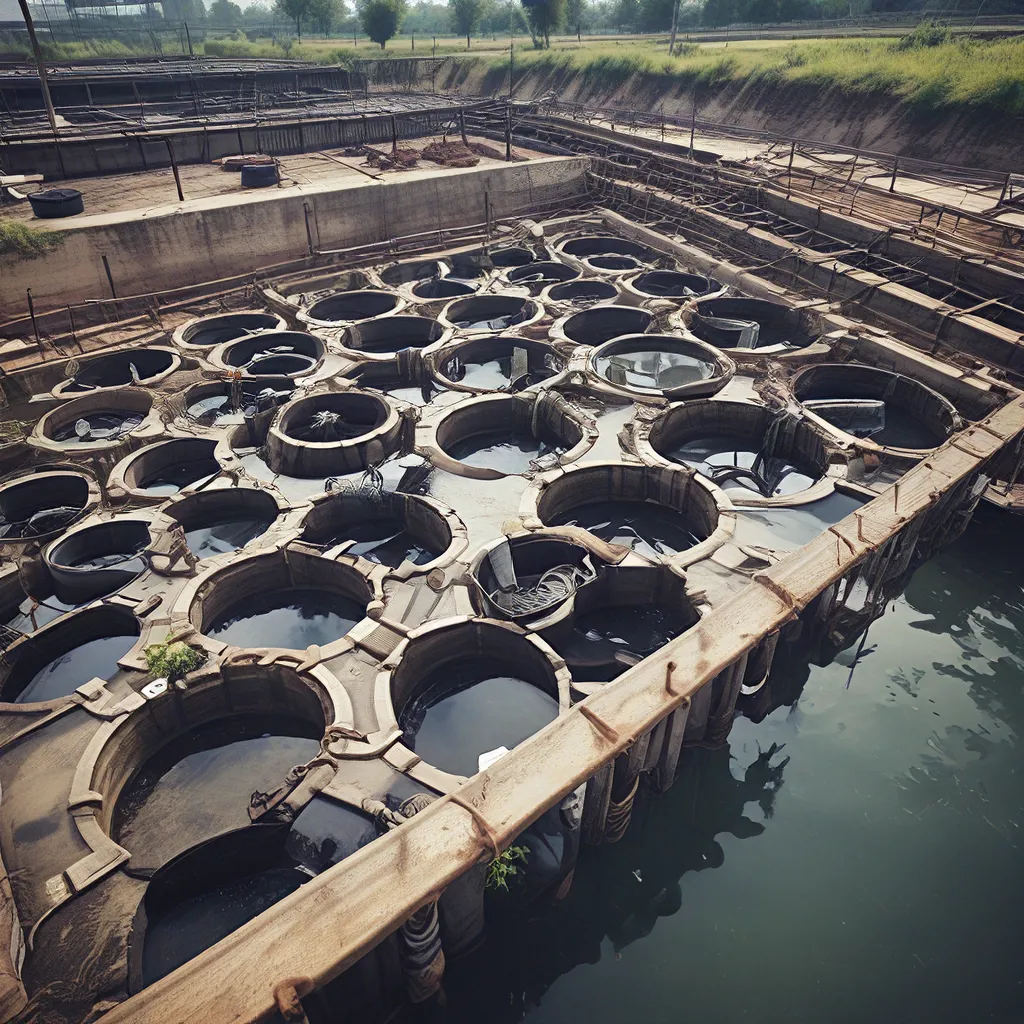
As a seasoned professional in the wastewater treatment industry, I’ve witnessed firsthand the remarkable transformations that can occur when we harness the power of employee engagement and sustainability. It’s a journey that’s not only about improving our environmental footprint, but also about cultivating a workplace culture that inspires and empowers every individual to be an agent of change.
Embracing the Sustainability Imperative in Wastewater Treatment
In today’s rapidly evolving landscape, the need for sustainable wastewater management has become more crucial than ever. The Prada Group, for instance, has recognized the importance of integrating sustainability into their operations, reporting a 2% reduction in water consumption in their 2022 Sustainability Report. Similarly, Bristol-Myers Squibb has highlighted their commitment to water stewardship, with a focus on reducing water withdrawal and increasing water reuse and recycling.
But the true power of sustainability lies in its ability to drive meaningful change at the individual level. As Nestlé has demonstrated in their 2023 Creating Shared Value and Sustainability Report, fostering a culture of sustainability can unlock remarkable employee engagement and innovation. By empowering their workforce to contribute to sustainable initiatives, Nestlé has seen a surge in employee satisfaction and a heightened sense of purpose.
Gamification: The Secret Weapon for Engagement
If sustainability is the foundation, then gamification is the catalyst that ignites the transformation. Imagine a workplace where every employee is not just a cog in the machine, but an active participant in the journey toward environmental stewardship. This is the power of gamification – the art of applying game-like elements to non-game contexts.
Alpha Wastewater, a leading provider of wastewater treatment services, has embraced this concept wholeheartedly. By incorporating gamification into their employee engagement strategies, they’ve witnessed a remarkable surge in sustainability-driven initiatives and a palpable shift in their company culture.
The Gamification Playbook for Wastewater Treatment
So, how does one harness the power of gamification to drive sustainability in the wastewater treatment industry? Let’s dive into the key elements that have proven successful:
Leaderboards and Challenges
Healthy competition can be a powerful motivator. By creating leaderboards that track individual or team-based sustainability metrics, such as water conservation or energy efficiency, employees are encouraged to continually improve their performance. Challenging them to beat their own records or outperform their colleagues can foster a sense of friendly rivalry and collective achievement.
Reward and Recognition
Nothing beats the satisfaction of being recognized for one’s efforts. Implementing a robust rewards system, whether it’s tangible incentives or public accolades, can go a long way in reinforcing the value of sustainable behaviors. Celebrating individual and team successes not only boosts morale but also inspires others to follow suit.
Storytelling and Personalization
Wastewater treatment can be a complex and, at times, daunting topic. By infusing the narrative with personal stories, relatable analogies, and a touch of humor, you can make the journey more engaging and accessible. Encouraging employees to share their own sustainability-driven experiences can further amplify the personal connection and inspire others to get involved.
Feedback and Continuous Improvement
Gamification is not a one-time event but an ongoing process of refinement and enhancement. Regularly soliciting feedback from employees, analyzing the data, and iterating on the gamification strategies can ensure that the initiatives remain relevant, effective, and responsive to the evolving needs of the organization.
The Ripple Effect of Sustainability-Driven Engagement
As employees become immersed in the gamification of sustainability, the impact extends far beyond the workplace. Studies have shown that individuals who actively participate in sustainability initiatives at work are more likely to adopt eco-friendly practices in their personal lives as well. This ripple effect creates a positive feedback loop, where the collective efforts of the team amplify the organization’s environmental impact and inspire broader societal change.
Embracing the Future of Wastewater Treatment
The future of wastewater treatment lies in the hands of our workforce – a workforce that is empowered, engaged, and driven by a collective vision of sustainability. By harnessing the power of gamification, we can cultivate a culture that celebrates individual contributions, fosters collaboration, and ultimately, transforms the way we approach the challenges of wastewater management.
As we continue to push the boundaries of innovation and explore the frontiers of sustainable wastewater treatment, I’m confident that the integration of gamification and employee engagement will be a pivotal factor in shaping the industry’s path forward. It’s a journey that requires courage, creativity, and a willingness to embrace the unexpected. But in the end, the rewards will be truly transformative – for our environment, our communities, and our shared future.